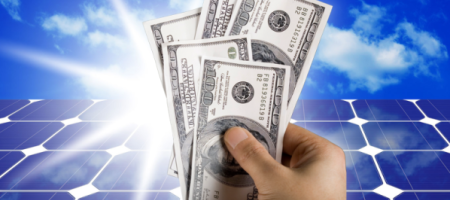As the solar industry matures, reducing financing cost is now becoming big news, and not just for PV, but now for CSP as well.
For years, the big news in solar has been coming out of research and development, from technical innovation. But in what appears to be a sign of the maturing of the industry, this year it seems that the bigger news is coming from the development of new methods of project finance that hold the promise of cutting financing costs.
The biggest of these driving forces in cutting financing costs is the yieldco. Yieldcos are essentially publicly traded holding companies which bundle assets that produce a steady and predictable flow of income, such as energy plants, that have long-term distribution agreements. The cash flow is distributed among investors in the vehicle as dividends.
Perfect for utility-scale solar PPAs
Yieldcos are almost perfectly suited to capturing the value of renewable projects. While they can face many uncertainties during bidding, permitting and development, once they are connected to the grid their cash flows are low-risk, because they typically generate a steady income from 20 or 25-year PPAs or tariffs, once in operation.
Yieldco financing has spread rapidly, with renewable energy giants Abengoa, ACS, NextEra Energy, NRG Energy, and SunEdison all setting up yieldcos to raise millions of dollars through initial public offerings within the last years. Recently, Canadian Solar has followed suit, whereas First Solar and SunPower are on the verge of joining the race to cheap finance.
Among CSP developers, Abengoa has been first out of the gate to use a yieldco to include CSP projects under construction in its yieldco Abengoa Projects Warehouse 1 (APW1), to gain access to what it calls “the cheapest equity” in the market.
The company’s yieldco, APW1 will acquire a portfolio of Abengoa projects in Mexico, Brazil and Chile. The total investment by APW1 will be over $2 billion.
“As we develop new projects, they will be passed on to Abengoa Yield, giving it guaranteed growth in revenues,” said CEO Manuel Sanchez Ortega last year.
How is a yieldco structured?
According to Marley Urdanick in a paper on the subject for NREL, “A yieldco is a dividend growth-oriented public company, created by a parent company that bundles renewable and/or conventional long-term contracted operating assets in order to generate predictable cash flows. Yieldcos allocate cash available for distribution (CAFD) each year or quarter to shareholders in the form of dividends.”
Why the rush?
From an investors perspective, what makes a yieldco attractive is that they can expect low-risk returns that are projected to gradually increase over time as more renewable projects are added and earlier ones mature and perhaps enter their golden years of a second 25 year PPA.
And for the first time, favourable tax treatment is extended to the renewable industry that was previously available only for the oil and gas industries.
Yieldcos are structured to avoid double taxation, like some of the investment vehicles that have till now made oil and gas investment so attractive to the wealthy. Instead of taxation at both the corporate level and again at the shareholder level, a yieldco can pass its earnings through to investors, untaxed.
What are the benefits from the developer’s perspective?
Yieldcos drive down the cost of financing projects. The capital raised can be used to finance new projects at rates lower than those available through tax equity finance – or it can also be used to pay off expensive debt.
“The advantage of forming a yieldco is that it gives you the ability to drop projects into an existing publicly traded vehicle quickly,” explains Kevin Smith, CEO of SolarReserve. “That publicly traded vehicle includes a portfolio of projects with long-term contracts and predictable revenue streams.”
How much costs might be reduced?
Because investors can reasonably anticipate a predictable and long-term revenue stream, the public investors in the yieldcos are interested in investing at lower returns, typically in the 4% to 7% range for yields. Within the renewable industry, this is much lower than typical project finance equity returns – and even comparable to debt rates.
“In a typical project finance structure with third-party equity, that equity is typically looking for a 10% to 13% return,” says Smith. “If you have the option of yieldco equity funding, and the yieldco returns are in the 7% range or lower, now you can bid a new project with a much lower pricing structure now that you have a source of low priced equity.”
How much can solar power prices be reduced?
Obviously financing is just one aspect of development costs, so it’s not going to perform miracles, but yieldco financing can make a surprisingly hefty reduction in the PPA or tariff that a CSP developer can offer a potential buyer.
“With an efficient yieldco, you can certainly take 15 to 20% off your power price as a result of the lower return equity requirements under a yieldco structure,” says Smith.
With lower financing costs, resulting in lower tariffs or PPAs for the power generated, solar becomes a more competitive player in electricity markets.
Published with permission from the original publication on CSP Today By Susan Kraemer.









Comments